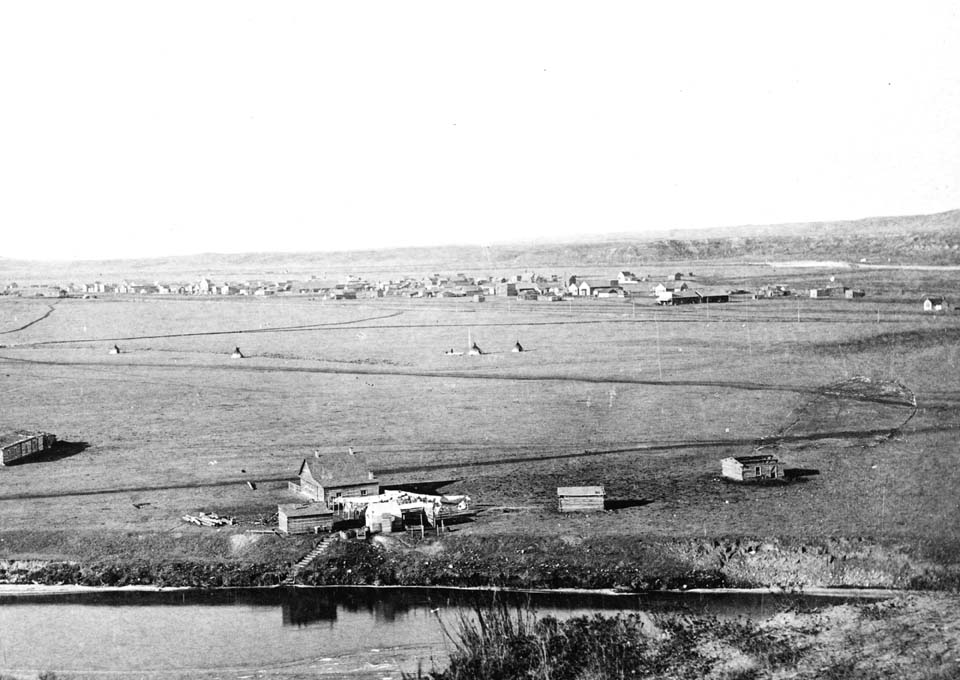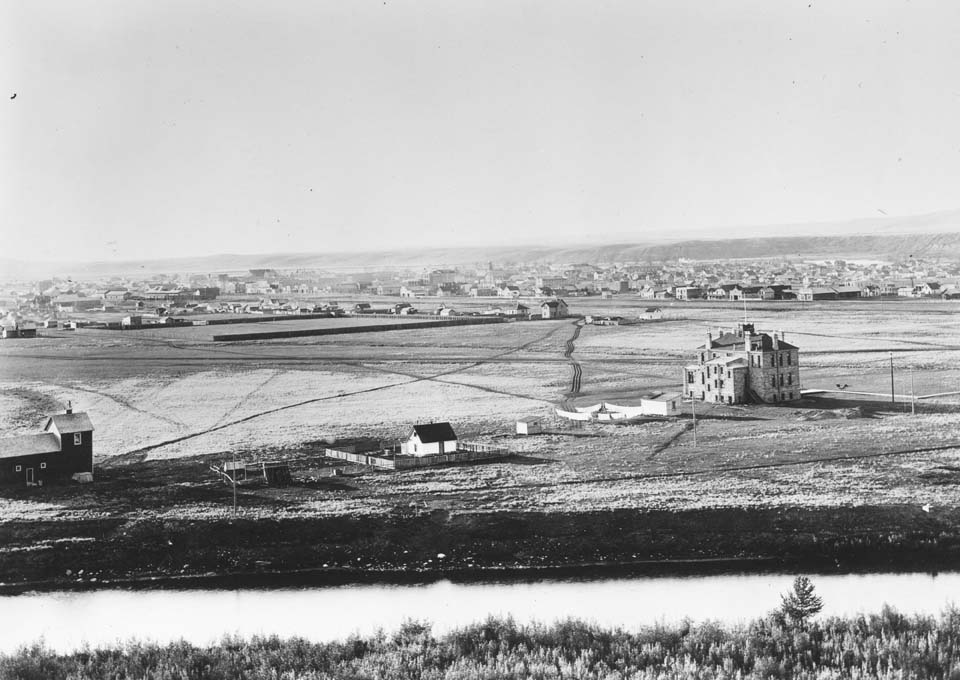David Thompson and Peter Fidler near today’s Calgary, Alberta
The eastern slopes of the Rocky Mountains often attracted abundant numbers of wintering bison, and was thus heavily used by native peoples 1 David Thompson spent the winter of 1787-88 in the area. A few years later, in the winter of 1792-93, Peter Fidler encountered Siksika, Piegan, Kainai, Ktunaxa, Flathead, and Shoshone peoples all hunting bison along the foothills. Some camps had over 100 teepees. This was an “open winter” on these plains with low snow cover in this area. Fidler observed many fires sweeping the landscape, as well as the intricate techniques First Nations used to move bison along runways into bison jumps and pounds. People may have used fire to help herd bison towards kill sites. Certainly fire use restricted bison grazing to unburned areas in mid-winter, although they would be attracted to recent burns in the spring. 2 Ironically, despite its heavy use by native First Nations, the Calgary area was relatively lightly visited by fur traders for the next 5 decades. The Bow and South Saskatchewan rivers provided a circuitous route for transporting trade goods compared to the North Saskatchewan. More importantly, the Blackfoot confederation (Siksika, Piegan, Kainai peoples) generally blocked direct travel across their lands to reduce the trade in guns to their traditional enemies further south and west. 3
In the fall of 1875 the Northwest Mounted Police established Fort Calgary at the confluence of the Bow and Elbow rivers. The police had been sent by the Canadian government to shut down a series of “whiskey forts” on the southern prairies where Americans traded liquor for buffalo hides from the First Nations. On August 23, 1883 the first Canadian Pacific Railroad train reached Calgary and by August 28th the newly initiated Calgary Herald reported “track laying is being vigorously proceeded by the C.P.R. ten miles west of Calgary.” Lying within sight of the Rockies, Calgary grew rapidly, first through cattlemen’s stockyards then propelled on by the exploitation of Alberta’s oil and natural gas resources. Its population grew from 4,091 in 1901 to 129,060 in 1951 to a million by 2006. Calgarians have well-plied their tourism and convention business, first through the famous Calgary Stampede rodeo and culminating in the 1988 Winter Olympics. Today, its international airport acts as a gateway for millions of mountain-bound international tourists and Calgarians themselves are frequent mountain visitors, with many of them keeping recreational homes in the upper Bow, Columbia, Okanogan, and Shuswap areas to the west. 4
Map and Footnotes
- Binnema, T. Common and Contested Ground: A Human and Environmental History of the Northwestern Plains. Norman: University of Oklahoma Press, 2001. ↩
- Fidler, P. A Journal over Land from Buckingham House to the Rocky Mountains in 1792&3. B. Haig ed. Lethbridge: Historical Research Centre. 1990. ↩
- Hughes, Douglas A. The Old Bow Fort. Calgary: Detselig, 2002. ↩
- References for the history of Calgary include Foran and Cavell, Calgary; D. B. Smith, Centennial City, Calgary 1894–1994, (Calgary: University of Calgary Press, 1994. ↩


